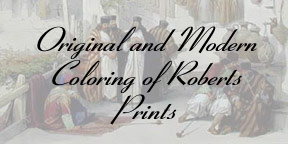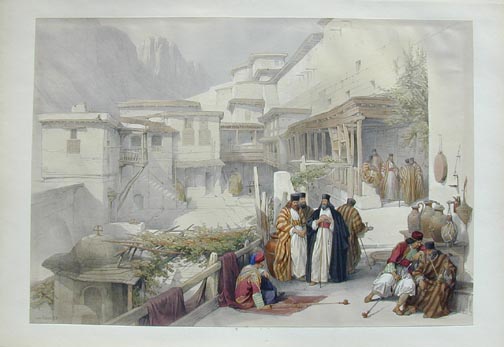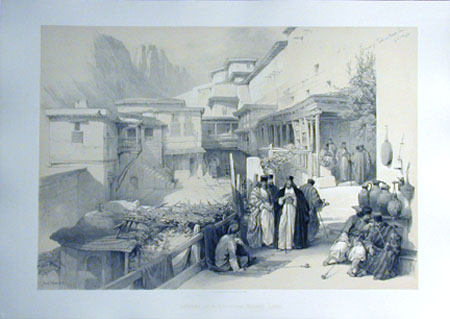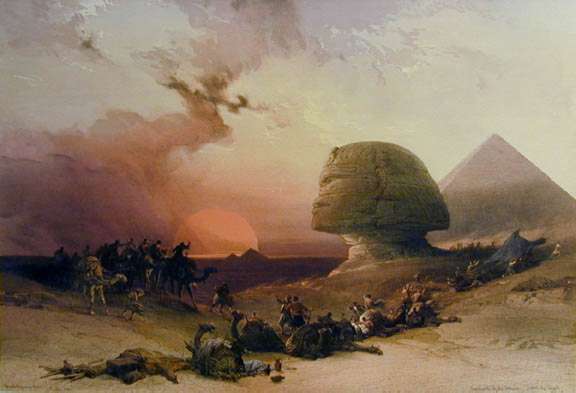

The original edition of 247 lithographs, published by F.G. Moon between 1842 and 1849, was produced in two versions - the Royal Subscription ("RSE") Edition, which was hand colored at the time of issue, and the Standard ("SE") Edition, which was not originally hand colored. Both were produced from the same lithographic stones, but on different types of paper.
The RSE's were printed on a thin "India" paper, and were then hand colored under the supervision of the publisher and Louis Haghe, the lithographer. This was typically performed by several hired colorists working on a production line basis, with each person painting a particular color or colors. The RSE prints were then trimmed to the image and glued along their edges onto a card. These images were issued to the original subscribers who had advanced money to cover the initial costs of publication.
The SE edition was intended to be somewhat more affordable. It was printed on heavier matte paper and was not originally hand colored. It was not trimmed to the image or laid on a card. Instead, the SE prints have a margin all around, with a publisher's mark and a block letter title below each image.
Because both editions were printed using the same multiple lithographic stones and inks, both the RSE and SE prints as originally issued display multiple ink tinting. The intensity and complexity of this printed lithographic coloring varied from print to print, but changed over the seven year period of production (1842-49). The Holy Land series was produced first, and generally displays more subtle printed coloring, usually only cream or fawn tints. The later Egypt and Nubia series has more, and more intense, printed colors including blues, oranges and even purples. (For example, see the SE version of St. Catherine's Principal Court at right, published in 1845, as contrasted with the SE Approach of the Simoon, below right, from the Egypt & Nubia Series, published in 1849. Neither have hand coloring added, but the printed colors on the later Approach of the Simoon, Desert of Gizeh are much more vivid and varied.)
Over the years collectors and dealers have arranged to have their SE prints hand colored to match the original RSE coloring scheme. Thus RSE's are described as having "original color", while painted SE's are described as having "modern" or "later" hand coloring. This hand coloring may have been done anytime from a few years after publication to a few days ago. To some who collect first edition prints, the thought of adding modern hand coloring to a lithograph may seem to border on sacrilege. The situation with respect to Roberts prints is unique, however.


